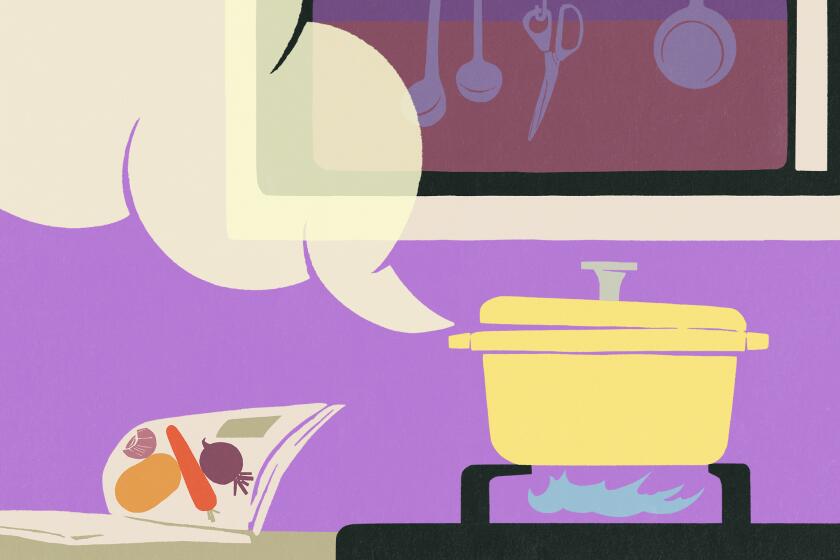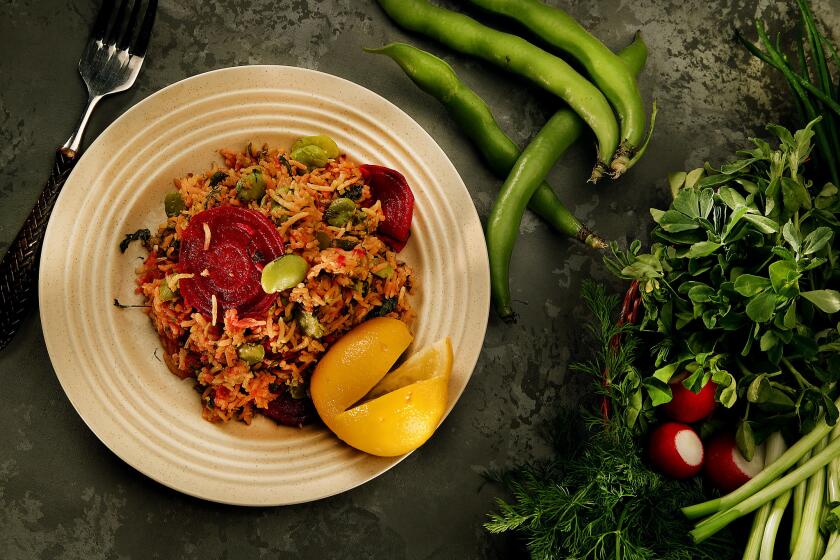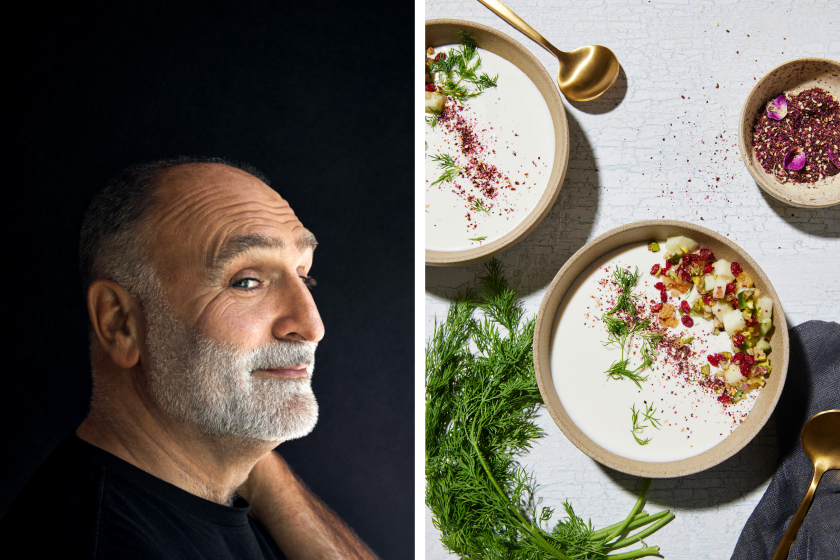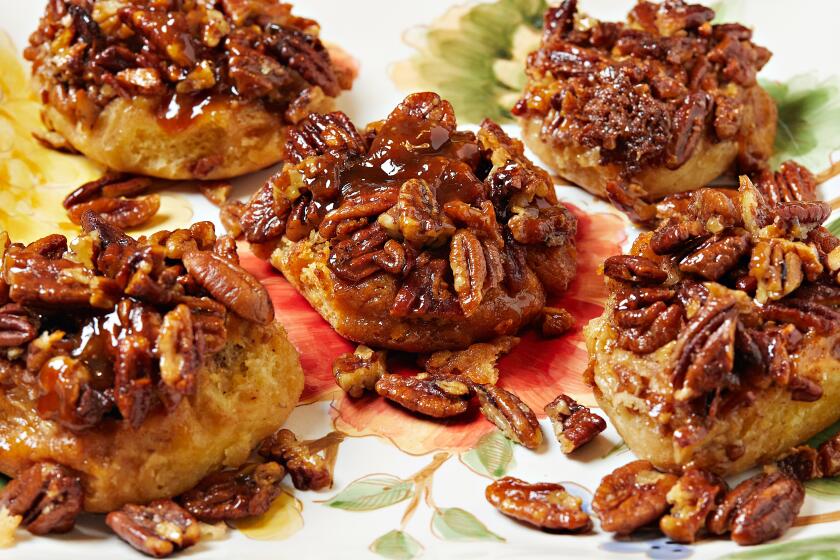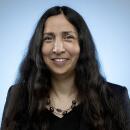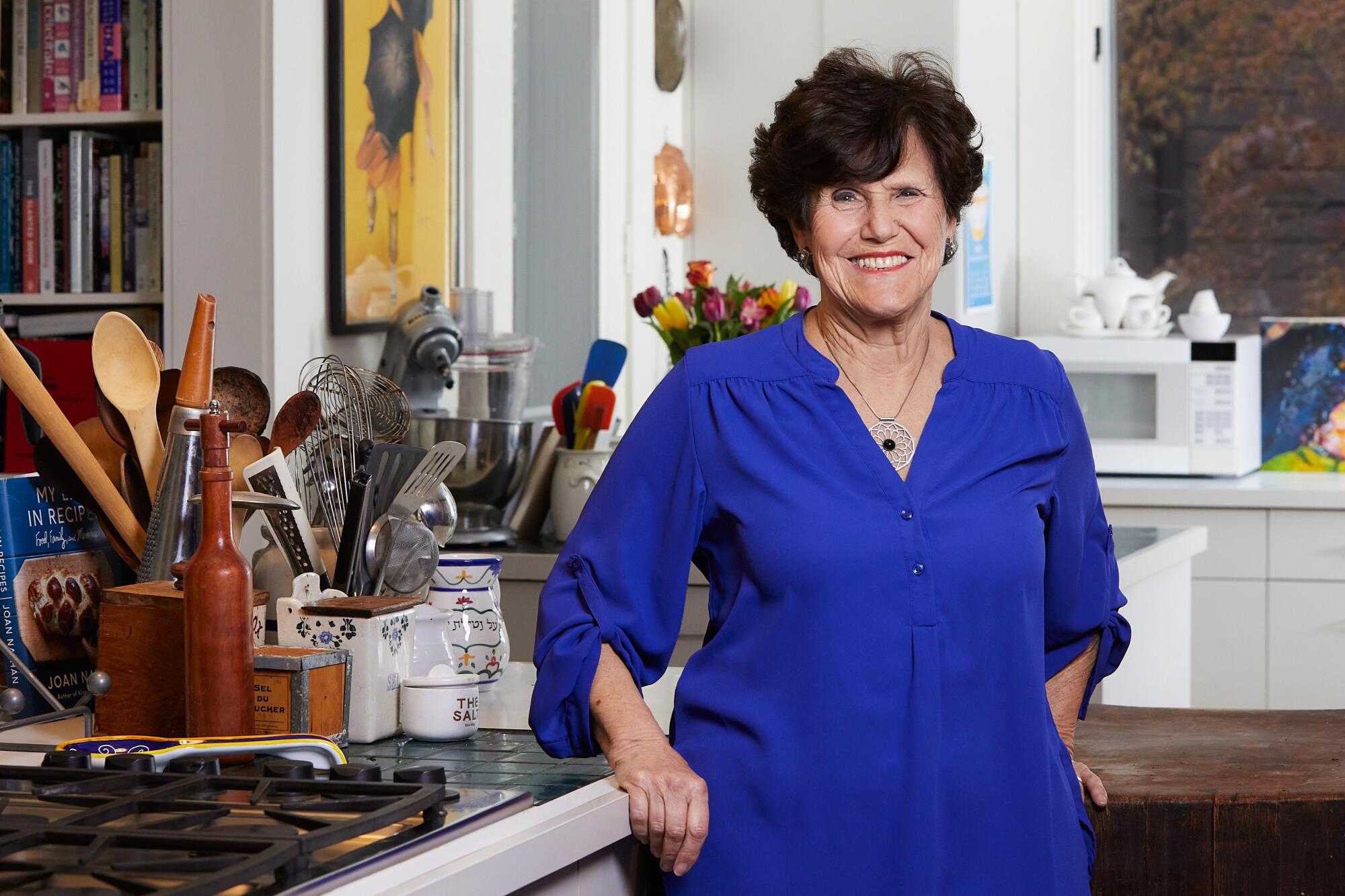
The morning after Joan Nathan’s 80th birthday party last year — a long-table Palm Springs gathering on the grounds of a hacienda-style compound where Samuel Goldwyn, Lucille Ball and Judy Garland are said to have lived at various times — guests from the nighttime celebration were invited to brunch at the midcentury showcase Abernathy House.
The partygoers who had come from Denmark, Germany and cities across the U.S. poured themselves coffee and took in the glamorous poolside setting after celebrating Nathan the previous evening with testimonials and dinner made with the help of her family, friends and colleagues. Grilled cabbage with spicy sour agave nectar from D.C.’s Centrolina chef Amy Brandwein; Lulu chef David Tanis’ citrus, olive and fennel salad; lamb sent from Philadelphia by Zahav chef Michael Solomonov; a new Tehachapi Heritage Grain Project rice variety from Anson Mills’ Glenn Roberts; Sherry Yard’s knockout birthday cake infused with passion fruit curd, plus many other courses. The toasts and dancing went late into the night.
The best new cookbooks of the season are cropping up like the superblooms of spring. They’re getting us into the kitchen to make Joan Nathan’s pecan rolls, José Andrés chilled yogurt soup, marinated feta with grapefruit and spice-roasted tomatoes from Kismet and more.
Now, with the arrival of the California desert morning, in walked Nathan, bright-eyed and bearing sweets. Surrounded by the aroma of cinnamon, sugar and toasted nuts, the author of “Jewish Cooking in America” set down platters of schnecken she’d made herself and watched with satisfaction as the group descended on the sticky pecan rolls still warm from being reheated in the oven.
This is a woman who almost never arrives empty-handed. Even at her own birthday brunch.
1
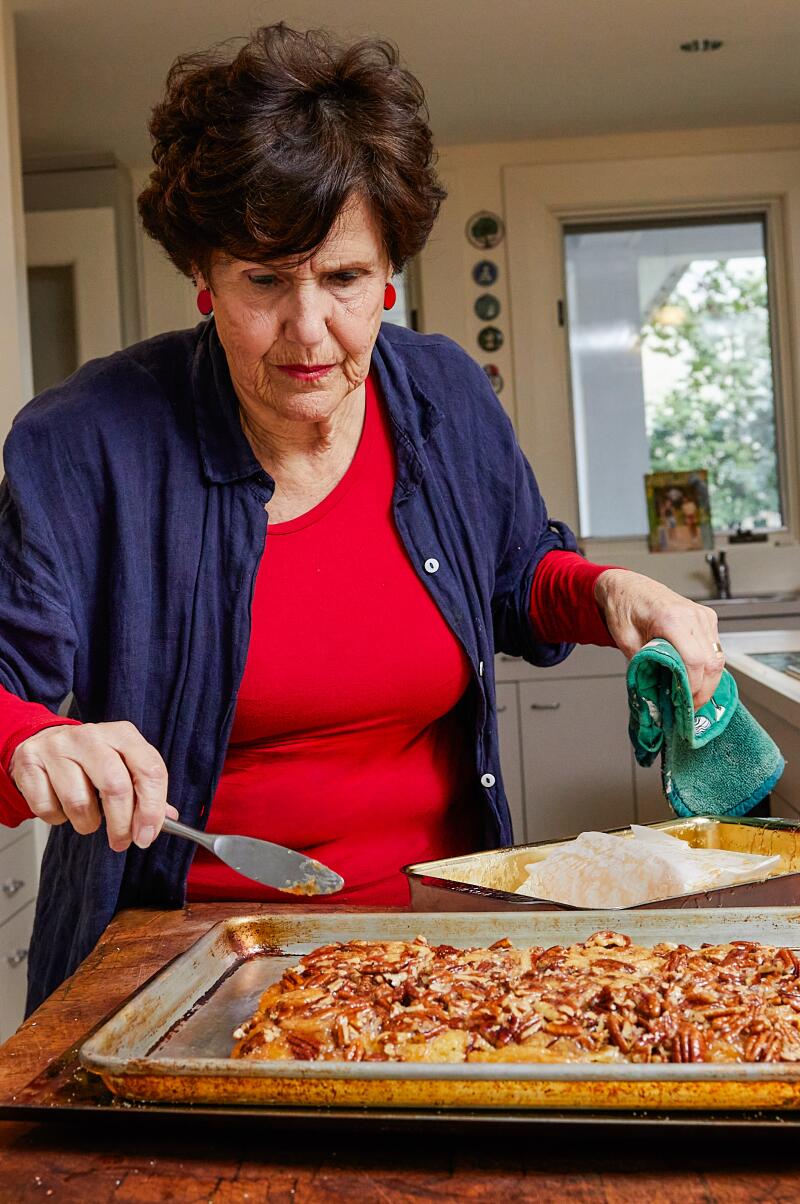
2
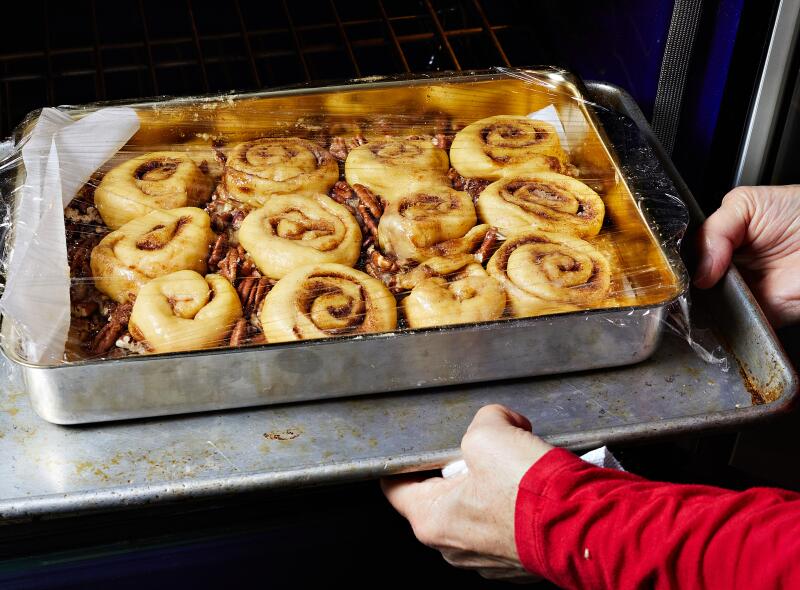
3
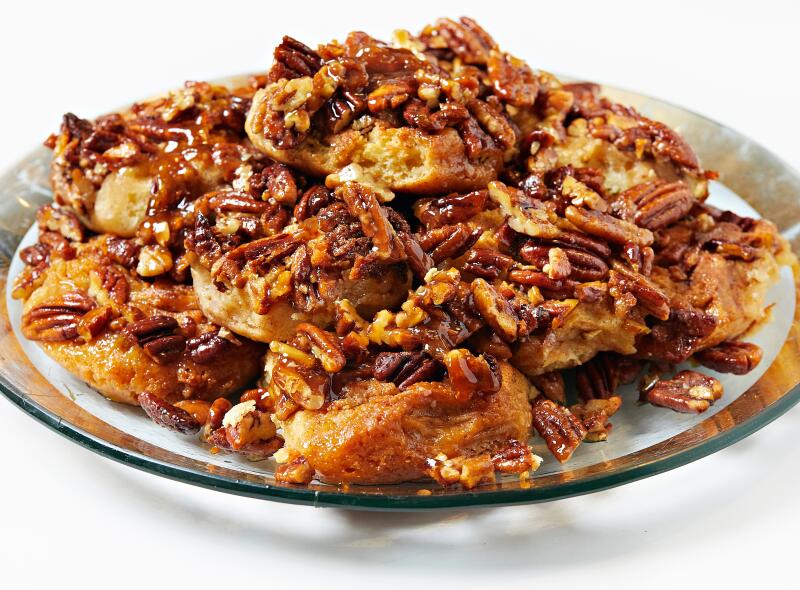
1. Hot pecan rolls: Joan Nathan, in her kitchen, turns over a batch of her Ann Arbor schnecken after they’ve baked so that they’re served with the pecans on top. 2. After the dough proofs, the schnecken are placed bottom-side-up atop the pecans and then baked. 3. Hot and ready to eat. (Deb Lindsey / For The Times)
And, of course, her schnecken — “snails” in German — come with a story or three. Schnecken recipes have appeared in a few of Nathan’s 12 cookbooks, sometimes tracing the historic evolution of the rolled sweet and sometimes describing the bakers who either shared their recipes or inspired her own recipes.
But the cookbook with Nathan’s latest version of schnecken is one that for the first time fully focuses on her own story, from inquisitive schoolgirl to the world’s preeminent expert on Jewish food.
At the L.A. Times Festival of Books
Food Memoir: Cooks with Books. Joan Nathan (“My Life in Recipes: Food, Family, and Memories”), Rosa Jackson (“Niçoise: Market-Inspired Cooking from France’s Sunniest City”) and Klancy Miller (“For the Culture: Phenomenal Black Women and Femmes in Food: Interviews, Inspiration, and Recipes”) discuss their books with L.A. Times Food general manager Laurie Ochoa. Free but tickets required. Saturday, April 20, 4 p.m. at USC’s Ray Stark Family Theatre.
Of course, like any Joan Nathan book, “My Life in Recipes” is packed with stories about other people’s lives.
Zelig-like in her ability to observe notable people and events in the worlds of food and politics, but hardly ordinary herself even as she gently but persistently cajoles secret family recipes from home cooks around the world, Nathan’s life reflects the ever-broadening tastes of the American palate.
Consider that when she was living in New York and working for the Mayor’s Office of Midtown Planning and Development during the Abraham Beame administration, Nathan was one of the driving forces behind the 1974 founding of the still-running Ninth Avenue International Food Festival, possibly New York’s first public gathering for such a multiplicity of culinary cultures. At the time, 22 different cuisines were said to be represented in businesses along the avenue. A who’s who of food world figures were involved in the inaugural event, including Madhur Jaffrey, Edna Lewis and Diana Kennedy, who, as Nathan writes in “My Life,” “stood outside Alps Drugstore demonstrating guacamole.”
Though the title of Nathan’s first cookbook, “The Flavor of Jerusalem” (written with Judy Stacey Goldman), might lead some to think it was a book devoted only to Jewish recipes, the subtitle — “International Recipes From the Many Cuisines of the Sacred City” — reveals her lifelong search for what binds many disparate cultures together.
Her 2005 book, “The New American Cooking,” examined how immigrants shaped our tastes for the better. In “King Solomon’s Table” (2017), she explored the food of the Jewish diaspora, including Salvadoran latkes and Brazilian-Belarusian grouper fish. And her definitive 1994 book “Jewish Cooking in America,” which also became a PBS series, not only told stories about cholents, kugels and latkes but of the Cajun, Moroccan, Syrian and other countries’ influences on the Jewish table.
Cookbook author and journalist Joan Nathan needed all the experience she’s accumulated throughout her career tracing foods of the Jewish diaspora to take on her latest project.
She might be a potent blend of her mother’s desire to “embrace the new” as Nathan describes the New York-born Pearl Gluck and her father Ernest’s tether to “the Old World that he left behind” when he came to the U.S. in 1929 — early enough to get many but not all of his family members out of Germany before the killing of Jews in concentration camps began. For all of his ties to Germany, however, Nathan’s father loved to eat out in the Chinese and Italian restaurants of Providence where the family spent many years. All of which is to say Nathan’s work exudes a respect for tradition — leading Jews of many different political convictions and cooking abilities to trust her when they need holiday recipes — as well as an openness and even eagerness to learn and experience “the new.”
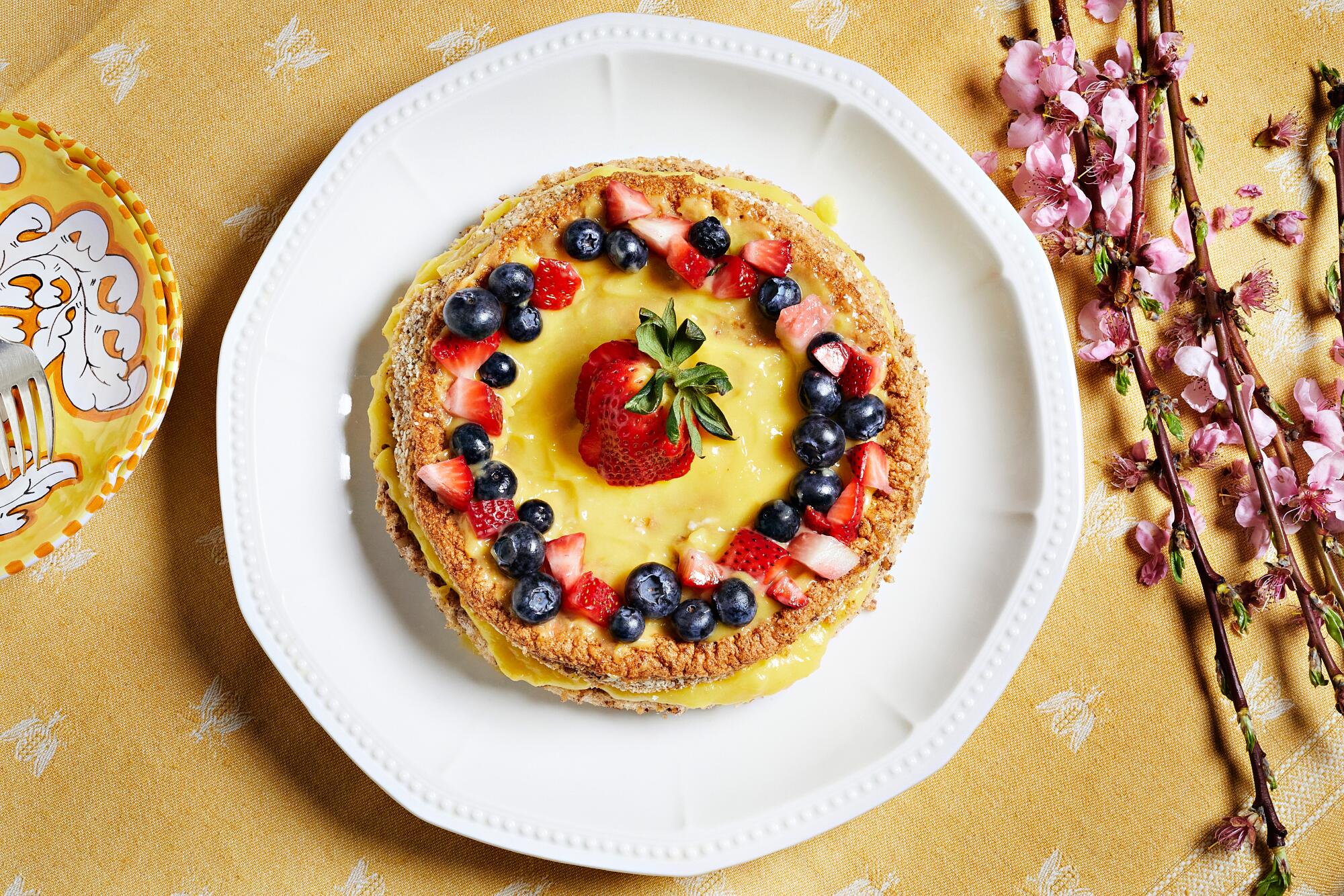
This might be why, after studying in France and Italy, then working in New York at the Mission of the Malagasy Republic (now Madagascar) to the United Nations, she was drawn to Israel and found herself working for Jerusalem Mayor Teddy Kollek, a complicated politician known for his advocacy of Israeli-Palestinian coexistence. Through her job as foreign press attache, she acquired a Rolodex of contacts and met several dignitaries. Among them, Barbra Streisand and human rights activist Elie Wiesel, who, as she writes in “My Life,” asked her what she did “to ward off depression.” She told him that she usually tried to find a new walk in the city. “When I asked him the same question, he replied, ‘With me, it’s not so easy.’”
Her time working for Kollek is what set Nathan on her path as a cookbook writer intent on finding the human connections to the recipes she published.
“I saw how food — and not just food — but eating together, eating at somebody’s table, no matter who it was, it’s a way of saying, I like your food. I like you,” she says over the phone. “People get much more relaxed. I learned that from Teddy Kollek. He was able to break down so many barriers through eating with people.”
José Andrés spends much of his time contemplating the unifying nature of food, both in and out of the world’s most dangerous conflict and disaster zones.
One of the best stories Nathan tells in “My Life in Recipes” centers on a lunch she and Kollek shared with the leader of an Arab village between Jerusalem and Bethlehem. After “Turkish coffee infused with whole cardamom pods,” Kollek delivered the news that Jerusalem would not be paying for the paved road the village wanted because it was too expensive.
Then the mezze arrived — Bedouin cheese, hummus “drizzled with olive oil from the village,” baba ghanouj, kubbeh, “just-from-the-oven pita” and arak. The leader asked again for his road. Again, Kollek said no.
“Undaunted, the mukhtar nodded again, and out came the main dish ... one of the great Palestinian dishes from the city of Nablus,” Nathan writes.
It was mousakhan, chicken “roasted with cumin, cinnamon and pine nuts, with tons of sauteed onions colored pink by sumac ... served on a large pita bread soaked in olive oil while being warmed in the oven.”
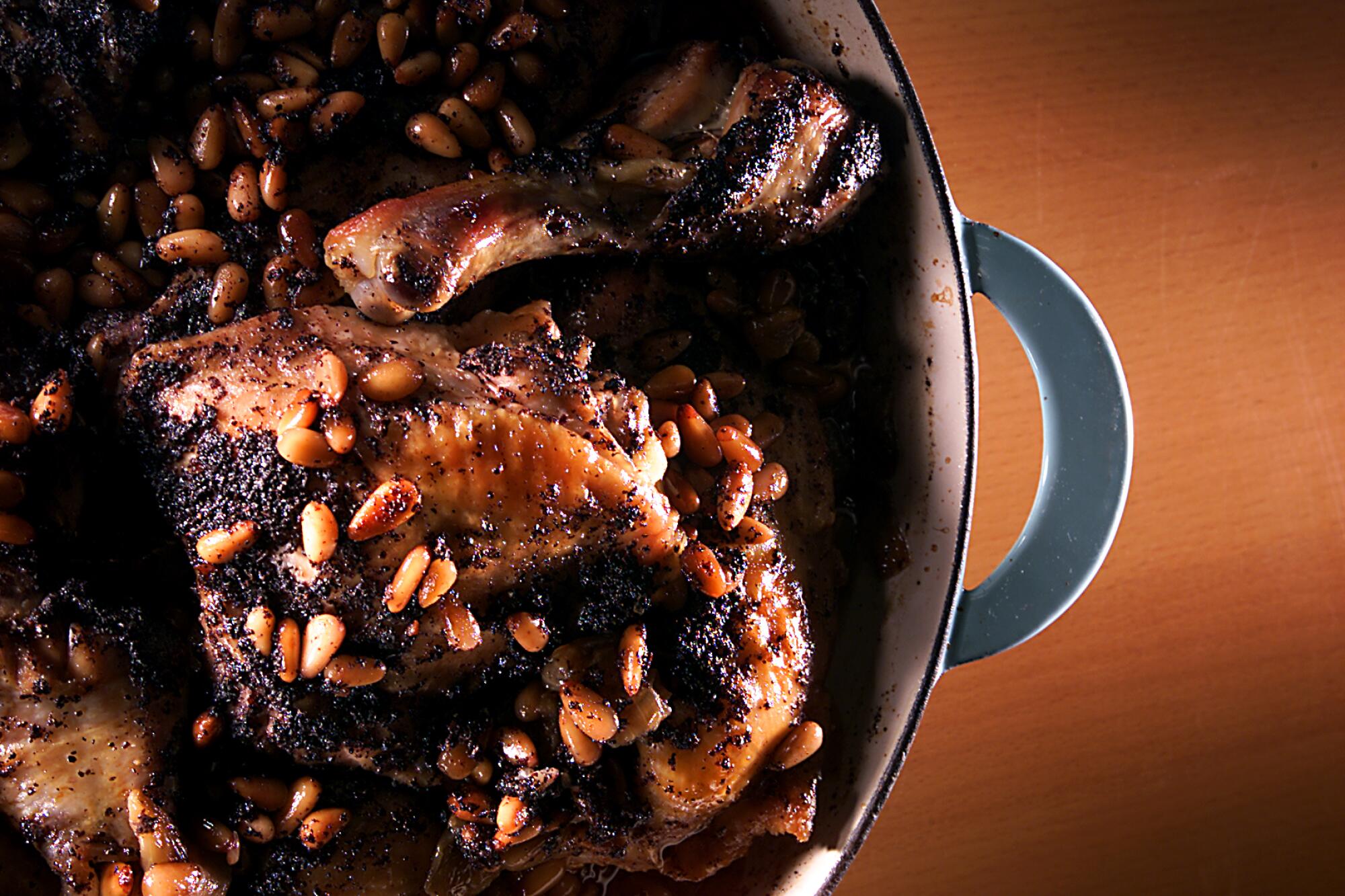
“As we feasted, something remarkable happened: We forgot to be uncomfortable. ... By the time we had eaten our fill of chicken and were sipping our mint tea, everyone had gotten what they wanted.”
The mayor got “one of the finest meals of his life.” The village got their road. “And me? Well, I got a lifelong career. I also got my favorite chicken dish.”
All these years later, of course, with cease-fire talks between Israel and Hamas breaking down, civilian killings continuing to rise in Gaza and Israeli hostages still being held, such a meal is hard to imagine today.
“People were talking to each other then,” Nathan says.
Back in 2001, just after the publication of her book, “The Foods of Israel Today,” Nathan wrote a story for this paper in which she said, “I have visited Jewish Israeli home cooks of Moroccan, Libyan and Iraqi backgrounds. ... I have sat on the floor in Druze, Syrian Alawite and Kurdish kitchens, molding kibbeh. ... I have visited Palestinian villages where I have tasted sun-kissed figs plucked straight from the trees and Israeli-Arab villages where celebratory pancakes are baked in a tabun oven set into the earth and served stuffed with candied sesame seeds. ... Sadly, I could not have had those first experiences today. There is too much turmoil in the country that tears apart human relations.”
Yet her dream, “that Jews and Arabs can share the bounty of this land that they both claim,” she wrote then, was still strong.
Now, she says over the phone, “It’s much worse. I think fear on both sides is just too much. There are a lot of friendships between Jews and Arabs that are no longer. It’s just a sad time in our history.”
I ask Nathan if she still thinks food can bring people together.
“Well, I think sitting down can,” she says. “A week before Oct. 7, a friend invited me [to dinner with] a Palestinian family and we talked about things. It was amazing. After that dinner, the wife and I went walking. But after Oct. 7 happened, I just couldn’t call her. Then her husband reached out and said he had been working with a Jewish-Arab choir. Through this whole time, this choir has been practicing in Jerusalem and now they were coming over to the States. You know, all he wanted was people to come to the concert. And I thought, what an amazing thing to help support. ... How can that not break down barriers if you talk to people?”
The Recipes
Joan Nathan's Ann Arbor Schnecken (Sticky Pecan Rolls)
Joan Nathan's Passover Pecan Lemon Torte With Lemon Curd Filling
Palestinian Mousakhan
Find Joan Nathan at the Los Angeles Times Festival of Books on Saturday, April 20, 4 p.m., at USC’s Ray Stark Family Theatre, where she’ll discuss food memoirs with Rosa Jackson and Klancy Miller.
More to Read
Eat your way across L.A.
Get our weekly Tasting Notes newsletter for reviews, news and more.
You may occasionally receive promotional content from the Los Angeles Times.
